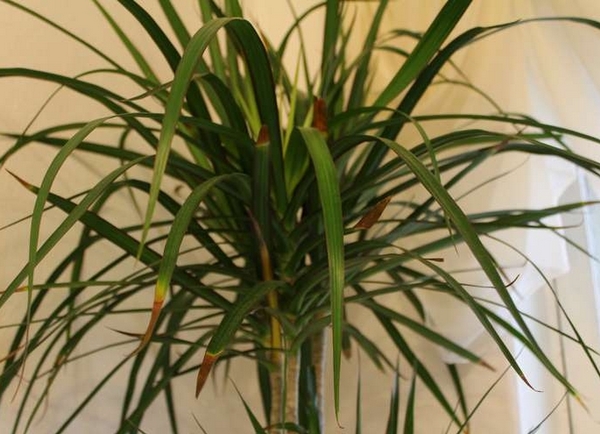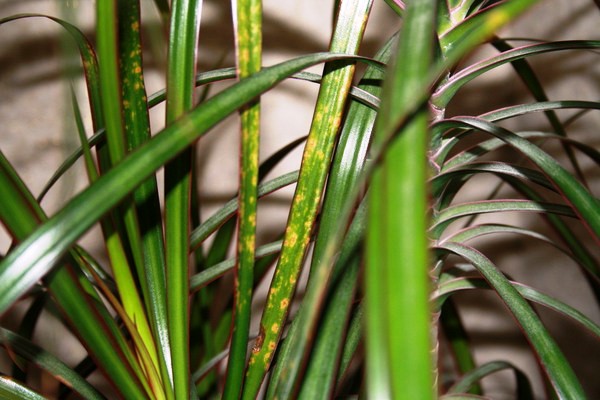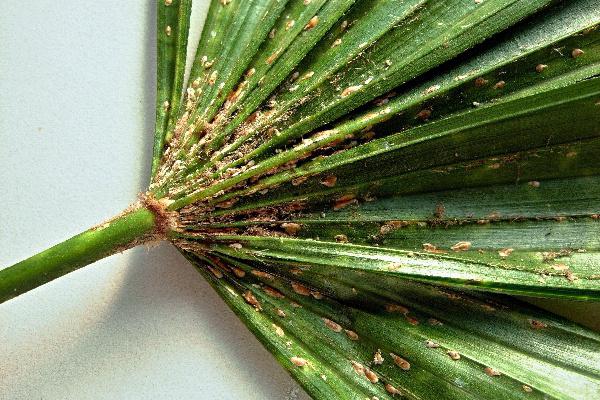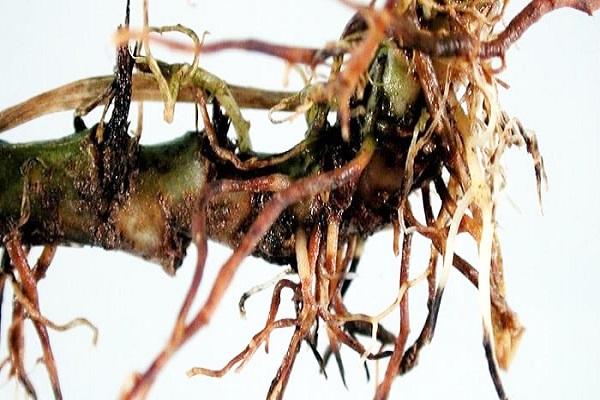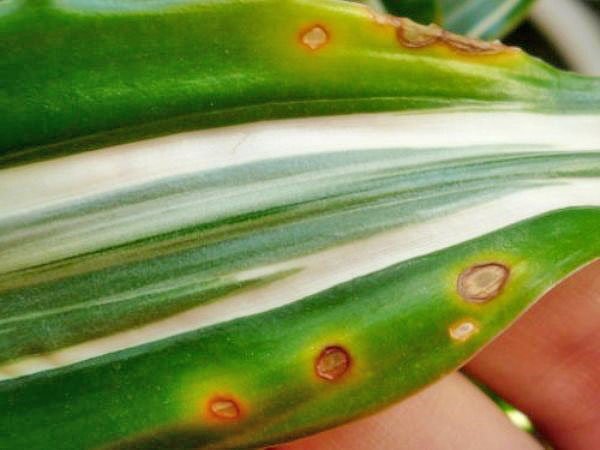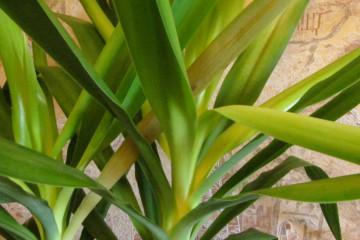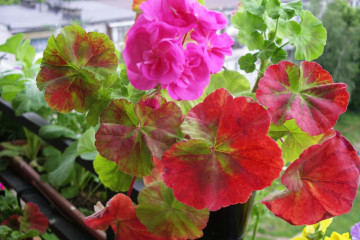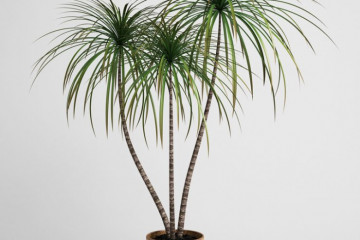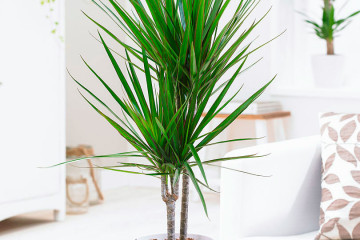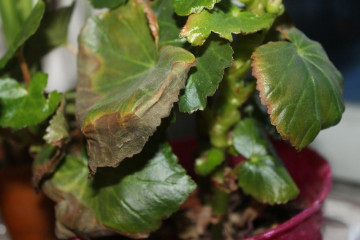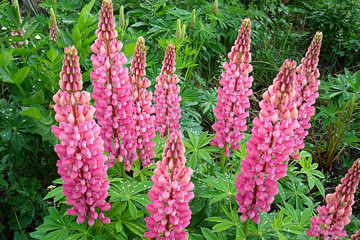What to do when dracaena leaves dry
Content:
The evergreen and showy dracaena (Dracaena marginata) often decorates apartments and offices. Its unpretentiousness and attractive appearance is appreciated by both flower growers and interior designers. Sometimes, when growing a crop, the question arises of why the tips of the leaves dry in dracaena. There are many prerequisites for these deviations, including insect attacks, disease, and improper care.
Dracaena leaves dry - what could be the reasons
When properly cared for, a plant becomes more resistant to fungal and viral infections and bacteria. Why do dracaena leaves dry? The problem is often associated with random florist errors. Pests can cause a lot of trouble, but they will not lead to his death.
Diseases
Dracaena leaves dry in the presence of specific diseases:
- Alternaria - pale brownish spots with a whitish middle are formed on the foliage. The affected areas darken and die off over time.
- Bacteriosis - the ends of the foliage turn brownish, then the lesion captures healthy parts. The stem, trunk and petioles are covered with ulcerations with an oily border.
- Heterosporia - spots of a beige shade are formed on the leaves, with a reddish edging. Further development of the pathology leads to a change in the color of the markings to a greenish-gray tone.
- Powdery mildew - initially lighter areas appear on the foliage, which eventually darken and turn brown.
- Gray rot - manifests itself as light brown spots, eventually becoming covered with a whitish bloom with fluff. The second symptom of the disease is considered to be blackish dots on the leaf plates.
- Phylostictosis - dark brown spots with blackish blotches appear on deciduous plates. The disease is more common in adult plants.
- Fusarium - the leaves turn yellow from the tips, become watery at the edges. As it spreads, the upper part of the trunk begins to dry out, the stems darken and become thinner, the whole plant becomes covered with dark brown spots.
Pests
List of common parasites in dracaena:
- Whitefly - a pest outwardly resembles an ordinary moth. He lays the larvae on the seamy surface of the foliage, which feed on sap and secrete a sweetish substance. When damaged, yellowish or whitish marks appear on the plant. Because of its ability to fly, the parasite is considered dangerous to all nearby crops.
- Mealybug - whitish insects seem to be dusted with flour. Eating plant sap stops the growth and development of flowers. You can identify the pest by the cotton-like waxy substance that covers the foliage.
- A spider mite is a small insect with a pale yellow or light green color, localized on the seamy side of the leaf plates.The active activity of the parasite leads to the formation of whitish spots and the finest cobwebs. The culture stops developing, loses its immunity to many diseases that ticks carry. As soon as the palm tree begins to turn white, it is necessary to begin an active fight against the parasite.
- Aphids - prefers the tops and seamy sides of the leaves. With a massive attack, the foliage withers, curls, loses its color and flies around.
- Thrips are miniature creatures no more than 2 mm in size. They prefer to settle on the inner side of leaf plates, live in groups. The upper part of the leaves becomes gray-brown with light dots.
- The scale insect is a small insect, 2 to 4 mm in size, grayish or yellowish in color. The main food of the parasite is plant sap. With a massive defeat, the foliage begins to dry out and crumble.
Soil moisture
In the summer, the earth should dry up to 5 cm in depth, you can determine the process by a wooden stick inserted into the pot. Watering is carried out every three days, in winter - once a week. When growing broad-leaved varieties, soil moistening is done more often due to the larger area of evaporation. After each procedure, the soil is slightly loosened.
Air temperature
In the spring and summer months, the temperature regime is 20-24 ℃. In winter, the temperature is reduced to 17-19 ℃ above zero. The maximum allowable lower limit is +15 ℃.
Decay of roots
The palm tree begins to die under the following conditions:
- Over-watering - the accumulation of liquid in the pots leads to a lack of oxygen. The root system is left without essential nutrients. The result of overflows is the softening of the trunk and blackening of the foliage.
- Cold and drafts - a constant temperature below +15 ℃ provokes tarnishing of the leaves, over time they turn black and fall off.
Other possible problems
Other prerequisites for drying the leaves include:
- Insufficient pot volume - active growth of the root system and an increase in plant size requires timely transplantation. The procedure is carried out with the utmost care, trying to avoid damage to the roots. Sometimes the process can cause a palm tree to spontaneously shed foliage due to stress.
- Direct sun exposure - from the sun's rays, the foliage begins to dry out and change the usual shade to a yellowish color. In some cases, the dried stem folds in half, it can dry out and die.
- Draft - a window sill is not suitable for a plant due to possible drafts, temperature changes under the influence of central heating. When ventilated, the culture will quickly begin to hurt.
- Top dressing - insufficient or excessive fertilization leads to yellowness and leaf fall.
It is pointless to treat the affected leaves - experienced florists advise cutting them off in order to avoid general infection of the green part. If you ignore the recommendations and prolonged inactivity, it is impossible to save a sick palm tree.
Dracaena is a beautiful culture that enriches the home with oxygen and decorates the room.Compliance with the rules of maintenance will help to avoid many problems, including the development of diseases and attacks of insect pests.
